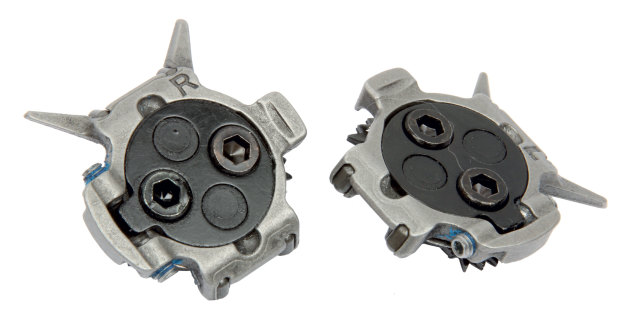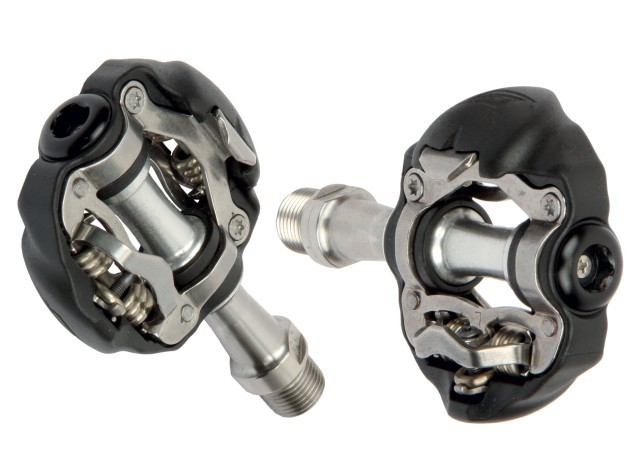Speedplay Syzr Pedals
I’ve been riding mountain bikes since the ’80s. In 1992 I bought my first full suspension bike in and it came with Shimano SPD pedals. Back then clipless MTB pedals were very much new technology and Shimano really nailed it with their design; good quality bearings, snappy engagement and they released as required (most of the time). The only thing they lacked was an effective amount of rotational float—something that I absolutely need to keep my knees happy.
This led me to sample a variety of clipless pedals that promised more rotational float. While each one offered some good features, there was always at least one negative that prevented me from loving them. Throughout this time I’ve been a big fan of Speedplay road pedals, so back in 2008 when I heard they were going to release a MTB pedal, I was really keen to give them a try. Eight years down the track and the Syzr has only just hit the market!
Speedplay offers them in three models; the regular chromoly Syzr sells for $280, our pedals had a stainless steel spindle and go for $330 while the titanium axle version costs a whopping $600. Ours weighed in at 313g for the pair and the cleats were 70g. That’s roughly the same as a set of XTR Race pedals, although the Speedplay cleats are about 20g heavier. The Ti version will save you all of 37g.

The Syzr is unique as the rotational float is actually built into the cleat itself. It consists of two main pieces; the black inner part is bolted securely to the shoe and the silver outer ring rotates around the outside. It’s the silver part that locks into the pedal and you can vary the amount of rotational movement between the inner and outer rings via two grub screws (they offer up to 10 degrees of movement). The float is totally separate from the release tension, which is adjusted independently via the spring mechanism on each side of the pedal.
Slop-Free & Solid
Where most MTB pedals gain their float from designed in movement between the cleat and pedal, the Syzr locks the outer cleat solidly in place. This proved extremely effective for power transfer as there was no unwanted slop or movement when pulling up on the pedals. Additionally, the wide wings on the cleat create a wobble-free platform that’s totally independent from the tread on your shoes. This is a major improvement over other designs that rely on the tread being just the right depth—this inevitably leads to an inconsistent and often sloppy interface between the shoe and pedal. The only catch with relying wholly on the cleat for power transfer is that you’ll need really stiff soled shoes to avoid suffering hot-spots on longer rides.
When clipping in, the engagement is snappy and positive. Releasing from the pedal is smooth and consistent thanks to the tiny little ceramic roller bearings that are built into each cleat; they never bind or jam and your foot always comes out. It works well but I did have a couple of issues in this area. As you twist outwards to release, the cleat rotates all the way to one side of its float range and stays there. Go to clip in again and you’ll need to wiggle your foot a bit to find the right engagement point. It’s something that you just have to get used to with the Syzr and a likely detractor if you’re trying get back into the pedal quickly whilst negotiating technical terrain.
The other glitch is a by-product of the smooth roller bearing assisted release. Crank up the spring tension and clipping in requires more effort but the release action doesn’t seem to get much harder. I feel it should be the other way around; clipping in should always be effortless while unclipping should get more difficult when the tension is increased. If you prefer a firm spring action to prevent accidental release, the Syzr mightn’t be for you.

Additionally, the spring mechanism is placed in the front ‘claw’ of the pedal while the rearward claw doesn’t move. This means you can pull up and back as hard as you like and you’ll never release out inadvertently—even with a really low spring tension. This is great for XC racers and those focused on getting the pedal power down fast. On the flipside, your foot is more likely to come out in a forwards direction; something that’s likely to be problematic when riding rough descents on the limit.
Were they worth the eight year wait? Personally I appreciated the efficient connection that they provide with smooth lateral float. This in itself came close to winning me over but they clearly have their own set of shortcomings. Whether they’re deemed a success or not depends on where your priorities rest.
Echelon Sports (07) 3902 1155 www.echelonsports.com.au






